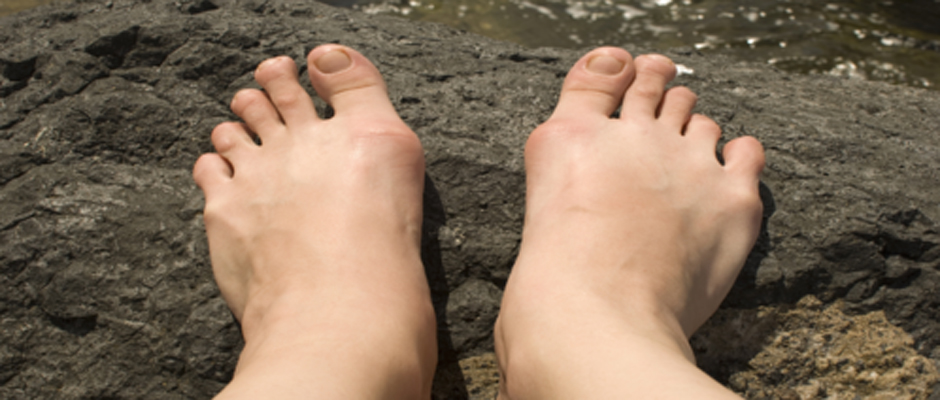Definition: abnormal enlargement of the joint (the first metatarsophalangeal joint, or MTPJ) at the base of the big toe (hallux)
Medical terminology: hallux abducto valgus

Have you noticed a bump growing on the side of your big toe? Do you suffer from pain in your big toe when walking? Are you finding it difficult to fit into your shoes or are your shoes starting to feel too tight? You might be experiencing the common signs and symptoms associated with a bunion.
What is a bunion?
A bunion is a term to describe the enlargement of the joint (first metatarshophalangeal joint, or MTPJ) of the big toe (hallux). Bunions form when there is a displacement between two major bones of the foot, the 1st metatarsal bone and the big toe bone (proximal phalange).
The displacement of these two foot bones causes a projection of bone at the big toe joint. The skin around the big toe joint can become inflamed due to rubbing against footwear or socks and a callus may form.
Within the joint there is a fluid filled sac (bursa) that cushions the bones and helps the joint to move smoothly. As the bunion develops, this sac becomes inflamed and thickens. This will make the joint appear swollen and can cause additional pain and pressure in the toe.
What causes a bunion?
Bunions may form due to abnormal foot function (poor biomechanics) during walking or running. Flat feet or high arches, over-pronation and excessive stress on the inside of the foot can cause bunions. Ill-fitting foot wear, especially shoes with a narrow toe box and excessive heel height, can cause the formation of a bunion as well.
Genetic factors can also predispose someone to bunion formation. A strong family history of bunions can increase the likelihood of developing this foot disorder.
Certain arthritic conditions, such as rheumatoid arthritis, and severe genetic and neuromuscular diseases, such as Down syndrome and Marfan syndrome, can cause muscle imbalances that can create bunions. Trauma to the joint of the big toe can also cause a bunion.
What is the treatment for a bunion?
Conservative Treatments
There are several conservative, nonsurgical treatment options. Consult your foot specialist to determine what treatment options will be most effective for you. The Foot Guy, David Allison, can provide the necessary conservative treatment options and incorporate unique treatment options, such as:
